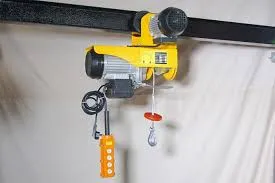


Understanding Chain Blocks and Lever Blocks Innovations in Lifting Technology
In various industrial applications, lifting equipment plays a crucial role in ensuring the safety and efficiency of operations. Two widely used types of lifting mechanisms are chain blocks and lever blocks. Each system offers unique advantages and is chosen based on specific operational requirements. This article delves into the functionalities, advantages, and applications of chain blocks and lever blocks, shedding light on their significance in modern material handling.
Understanding Chain Blocks and Lever Blocks Innovations in Lifting Technology
One of the primary advantages of chain blocks is their robustness and reliability. Made from high-quality materials, they can withstand heavy loads and challenging conditions, extending their lifespan even in harsh environments. Additionally, chain blocks are relatively easy to use, requiring minimal training. Their straightforward design allows for quick setup and operation, which can significantly enhance productivity on job sites.

On the other hand, lever blocks—often referred to as lever hoists—utilize a different mechanism for lifting heavy loads. Instead of a chain that is pulled down to engage the lift, lever blocks use a lever arm and a ratchet system. When the operator pulls down on the lever, it engages a series of gears that gradually lift the load. Lever blocks are exceptionally versatile and can operate in tight spaces where a chain block might not fit comfortably.
One standout feature of lever blocks is their ability to provide fine control over the lifting process. Operators can adjust the lifting speed and the positioning of the load with precision, which makes them ideal for tasks requiring careful maneuvering, such as lifting in confined areas or during assembly operations. Lever blocks are particularly useful in situations where a stable load lift is necessary, allowing users to control the descent as well as the ascent of the load.
Both chain blocks and lever blocks offer essential safety features, such as overload protection and durable construction to prevent accidental drops. However, their applications may vary considerably based on the specific needs of a project. For instance, in a manufacturing facility where heavy machinery needs to be lifted repeatedly and quickly, chain blocks would be an optimal choice. Conversely, in scenarios requiring more intricate handling, such as construction sites with uneven surfaces or limited space, lever blocks may prove to be more advantageous.
In conclusion, both chain blocks and lever blocks are indispensable tools in the lifting equipment market, each serving unique functions that cater to different industrial needs. Understanding their mechanisms, advantages, and situational applications can significantly influence the efficiency and safety of material handling operations. By choosing the right lifting equipment, businesses can optimize their operational workflows and ensure that heavy lifting tasks are performed safely and effectively. Whether in construction, manufacturing, or logistics, the role of these lifting devices remains critical in today’s industrial landscape.



